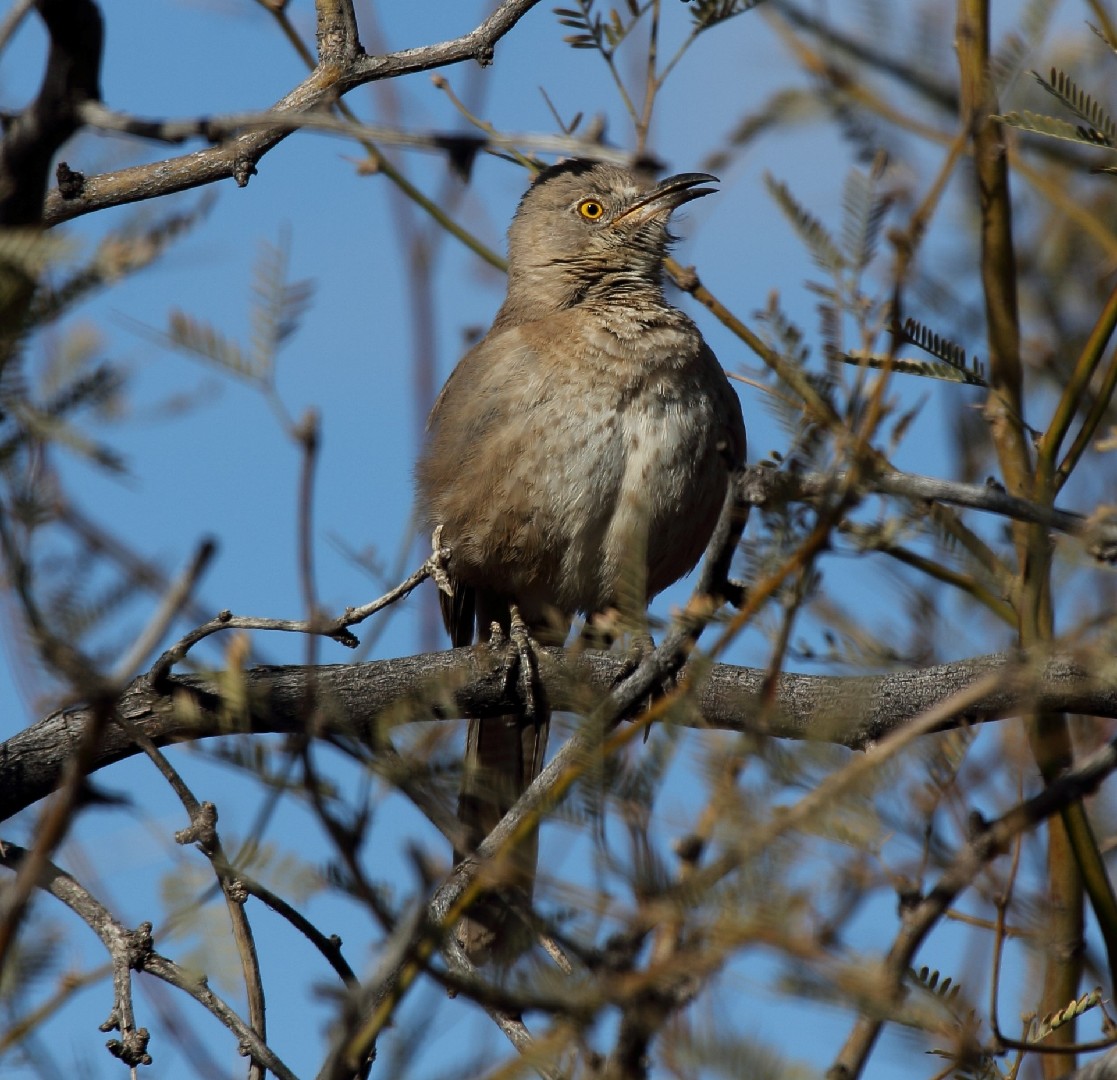Bendire's Thrasher
A species of American Thrashers Scientific name : Toxostoma bendirei Genus : American Thrashers
Bendire's Thrasher, A species of American Thrashers
Botanical name: Toxostoma bendirei
Genus: American Thrashers
Content
Description General Info
 Photo By Dominic Sherony , used under CC-BY-SA-2.0 /Cropped and compressed from original
Photo By Dominic Sherony , used under CC-BY-SA-2.0 /Cropped and compressed from original Description
Bendire's thrasher (Toxostoma bendirei) is a medium-sized species of thrasher native to the southwestern United States and northwestern Mexico. It is 23–28 centimetres (9.1–11.0 in) long, with a long tail and a medium-sized bill. Coloration is grayish-brown on its upperparts with paler, faintly dark streaked underparts. The base of the lower bill is often pale, the eyes are bright yellow, and the tips of the tail are white-tipped. 
Size
23-25 cm (9-10 in)
Life Expectancy
4 years
Nest Placement
Shrub
Clutch Size
3 - 5 eggs
Feeding Habits
Bendire's Thrasher primarily forages on the ground, utilizing its bill to uncover prey like insects and spiders, often hammering to extract them. It flips vegetation and stones in search, rarely using its feet. Occasionally, bendire's Thrasher gleans insects or eats fruit from shrubs and trees. Diet includes grasshoppers, crickets, beetles, ants, termites, caterpillars, and berries.
Habitat
Bendire's Thrasher's natural setting spans the arid landscapes of the American Southwest, particularly deserts and valleys with brushy terrain. Adapted to life below 8,000 feet, their favored habitats include arid grasslands, shrublands, and occasionally agricultural lands, rich in vegetation like cholla, yucca, mesquite, and Joshua tree. Unlike some relatives, bendire's Thrasher avoids denser cactus forests and high-elevation woodlands.
Nest Behavior
Both males and females of bendire's Thrasher collaborate to build the nest. Egg-laying and parental care patterns are not specified, but meticulous construction suggests dedicated nurturing.
Nest Characteristics
Bendire's Thrasher constructs bowl-shaped nests averaging 10 inches wide and 6 inches tall, with a 3-inch wide interior cup. Located circa 5 feet high in shrubs, trees, or cacti, they use sticks, grass, hair, rootlets, and occasionally human-made materials for lining.
Dite type
Insectivorous
General Info
Feeding Habits
Bird food type
Bird Feeder Type

Platform
Sounds
Song
Recording location: United States
Song
Recording location: United States
Behavior
Bendire's Thrasher typically exhibit monogamous tendencies and often remain as pairs throughout the year. These birds defend their nonmigratory territories year-round against their own species, displaying site fidelity. Vocal during breeding, male bendire's Thrasher are known to sing from shrub perches without any specific courtship display. Nest construction and chick rearing are shared responsibilities between both parents. Post-fledging, family groups forage collectively for weeks, indicating strong familial bonds and cooperative behavior within their chosen habitat.
Distribution Area
Bendire's thrasher lives in the brush-filled deserts and valleys and drylands of the south-western United States, mainly along the southern border that Arizona and New Mexico shares with Mexico, (the Madrean sky islands, mountain range sky islands of the northern Mexican range: Sierra Madre Occidental). 
Species Status
The Bendire's thrasher is listed as Vulnerable due to range-wide declines primarily as a result of the conversion of habitat to farmland. 
Scientific Classification
Phylum
Chordates Class
Birds Order
Perching birds Family
Mimids Genus
American Thrashers Species
Bendire's Thrasher